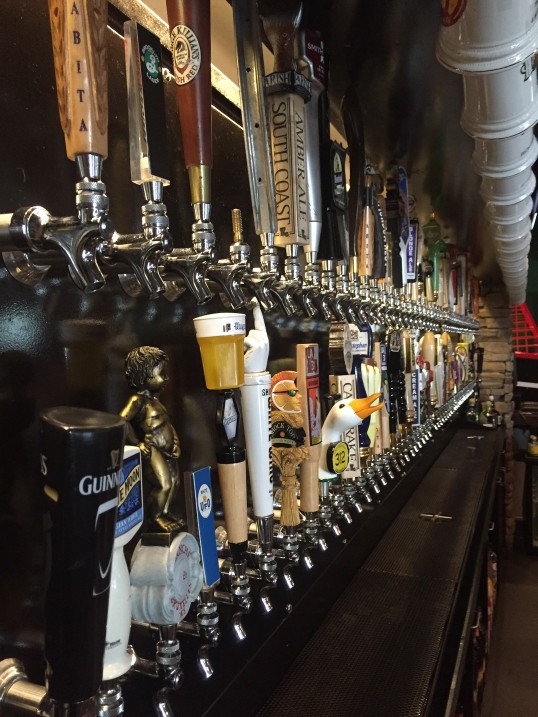
A decade ago at Richmond, Virginia’s popular Mekong Restaurant & Bar, bottled beer was the big sales driver. Today, 95 percent of the venue’s beer sales are on draft. Mekong, often cited as one of the best beer bars in the country, has slashed its bottled beer menu to about 100 listings, half of what it was a few years ago.
The Philadelphia café Tria Taproom, which opened over a year ago, has never stocked a beer bottle and serves wine, cider and soft drinks on tap as well. According to founder Jonathan Myerow, the decision to make the venue bottle-free was an effort “to be greener.” His customers haven’t blinked an eye. “No one has asked for a bottled beer since the taproom opened,” Myerow says. “Our customers prefer draft beer.”
And while Happy’s Irish Pub started serving only bottled beer a decade ago, the three-unit Louisiana concept has moved toward an exclusively draft beer menu in recent years. Scott Taylor, president and COO of Happy’s Baton Rouge–based parent company Walk-On’s Enterprises, notes that for bar operators, draft beer is more profitable, and for consumers, it provides romance. “You can use beautiful glassware and mix beers together,” he explains. Thanks to the success of draft beer at Happy’s, sister concept Walk-On’s Bistreaux & Bar has also been aggressively adding draft handles.
The trend toward draft beer—driven largely by the craft beer craze—isn’t just anecdotal. The National Beer Wholesalers Association reports that combined on- and off-premise sales of bottled beer declined nearly 2 percent last year, while draft beer was largely flat. Canned beer was the overall big winner, likely due to expansion into cans by more craft brewers.
With so much variety now available by the keg, many beer drinkers and bar operators are shunning the bottle. Mekong owner An Bui says that in addition to reducing the venue’s bottled brew selection, he has expanded draft offerings at sister concept Commercial Taphouse in Richmond, Virginia, with only sour beer available by the bottle.
At Neighborhood Restaurant Group’s venues in the Washington, D.C., area, increased tap rotation and sampling has contributed to a boost in draft sales. “New options are steadily available on draft, making the bottle and can list less necessary,” beer director Greg Engert explains. The company’s dozen-plus on-premise outlets include the beer-focused Birch & Barley and ChurchKey concepts, where drafts are $6 to $15 a serving.
In addition to having better margins, draft provides the flexibility to offer guests samples and flights. “Draft allows customers to commit to a 5-ounce taste, rather than a 12-ounce bottle,” says Taylor of Happy’s, where tap beer is priced at $4 to $9 a 16-ounce pour and flights of four 5-ounce pours are priced at $9.
Still, draft beer can be challenging for bar operators. Draft and cooling systems are expensive, and staff need to be trained on proper draft pouring and service. Mekong’s Bui notes that unless draft lines are maintained and regularly cleaned, beer quality can be compromised. Tria’s Myerow concedes that if the tap system goes down at an all-draft bar, chaos can break out. “You have nothing to sell,” he explains.
Joe Lipa, national sales manager at beer importer Merchant du Vin, cautions that despite the frenzy for locally produced draft beers, traditional bottled beers—such as Trappist ales from Belgium—shouldn’t be overlooked by on-premise operators. Fine dining restaurants, for example, can offer guests a bottle of Orval Trappist ale at the same price as a glass of wine, with margins that are the same or better. “The bottle selection should complement the draft selection at bars and restaurants,” Lipa says. “There will always be a place for bottles.”